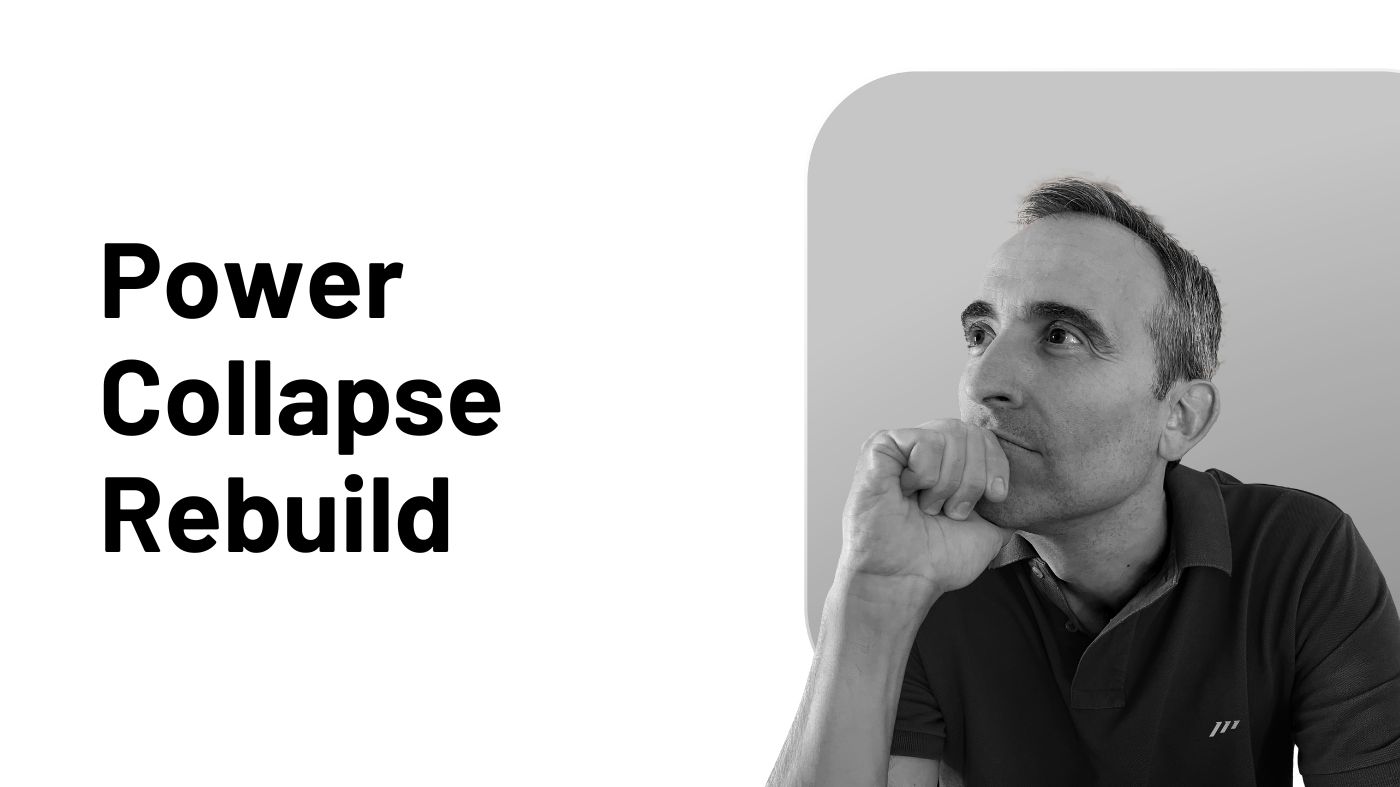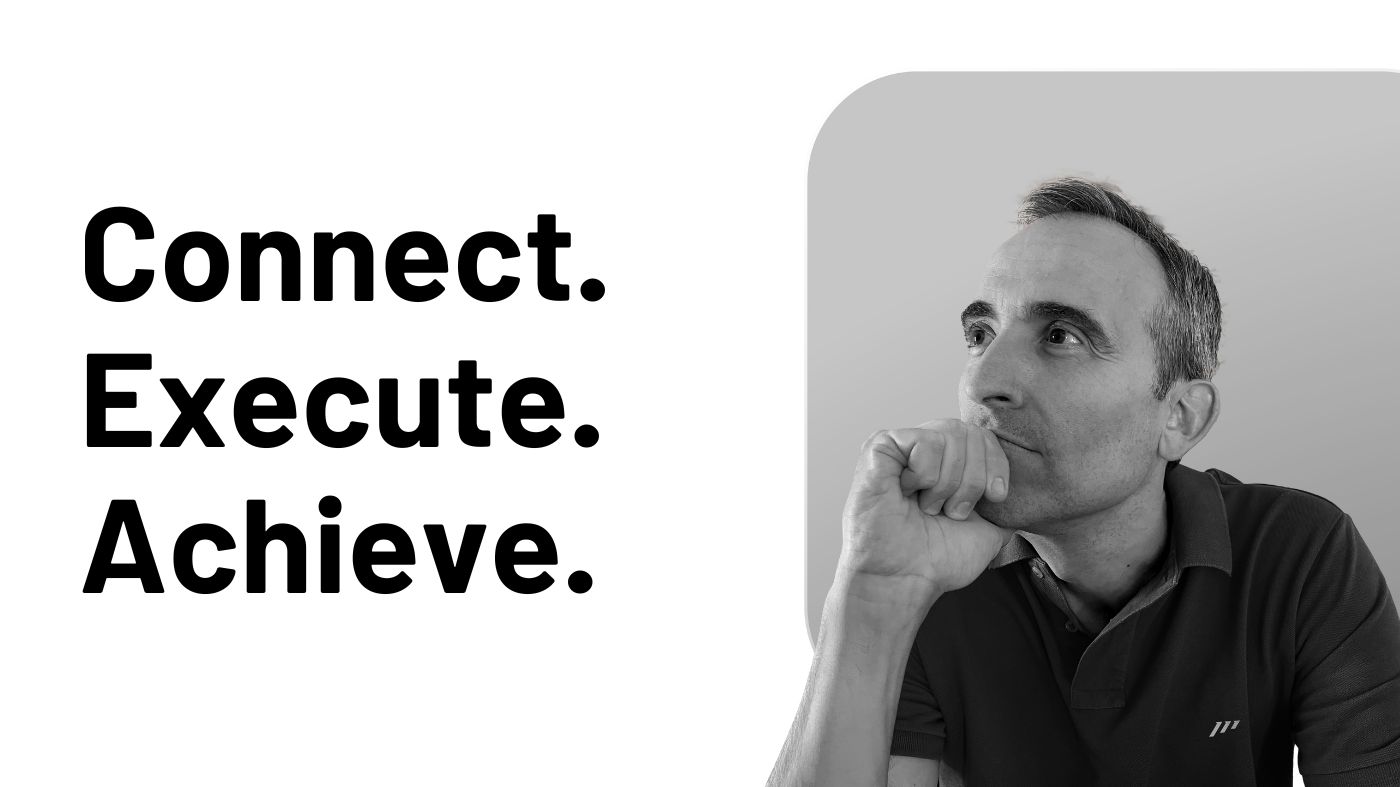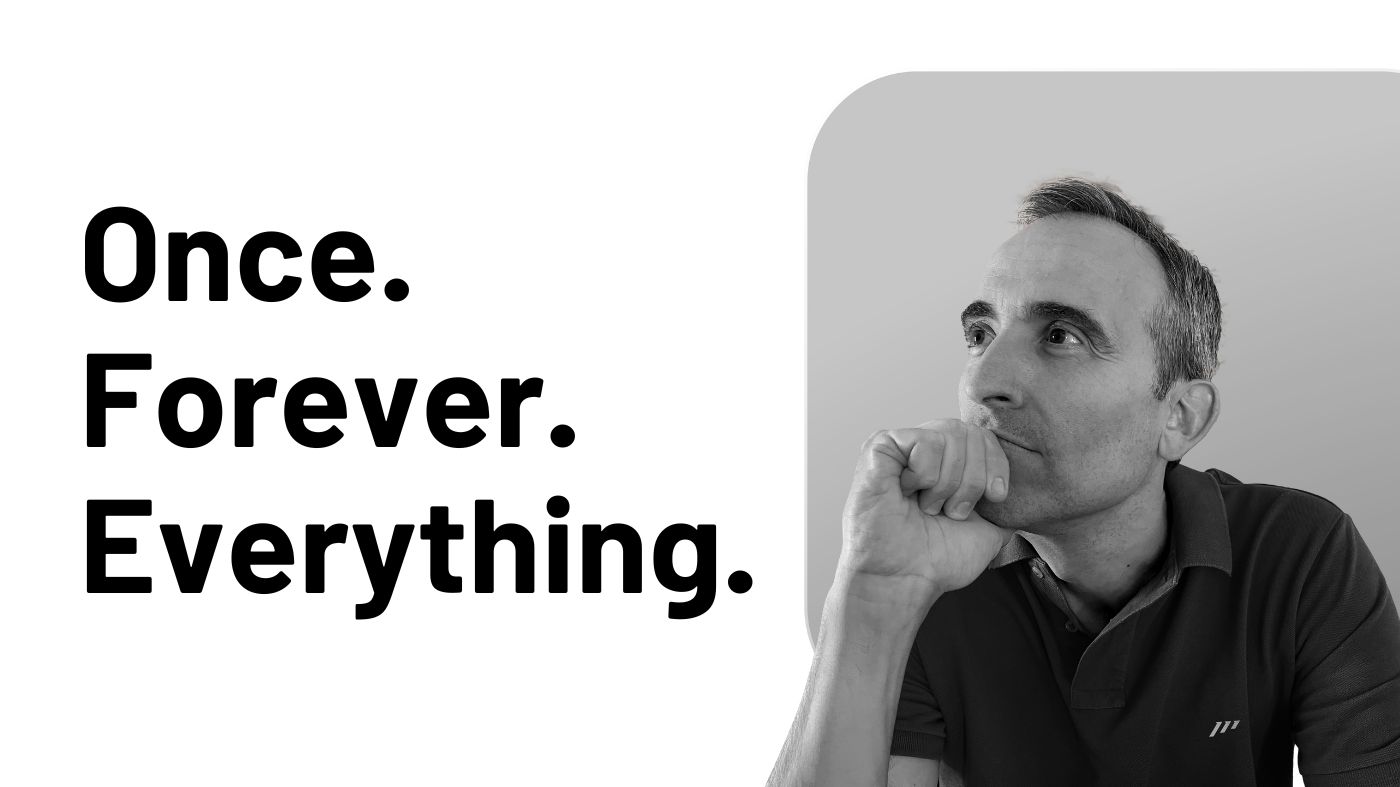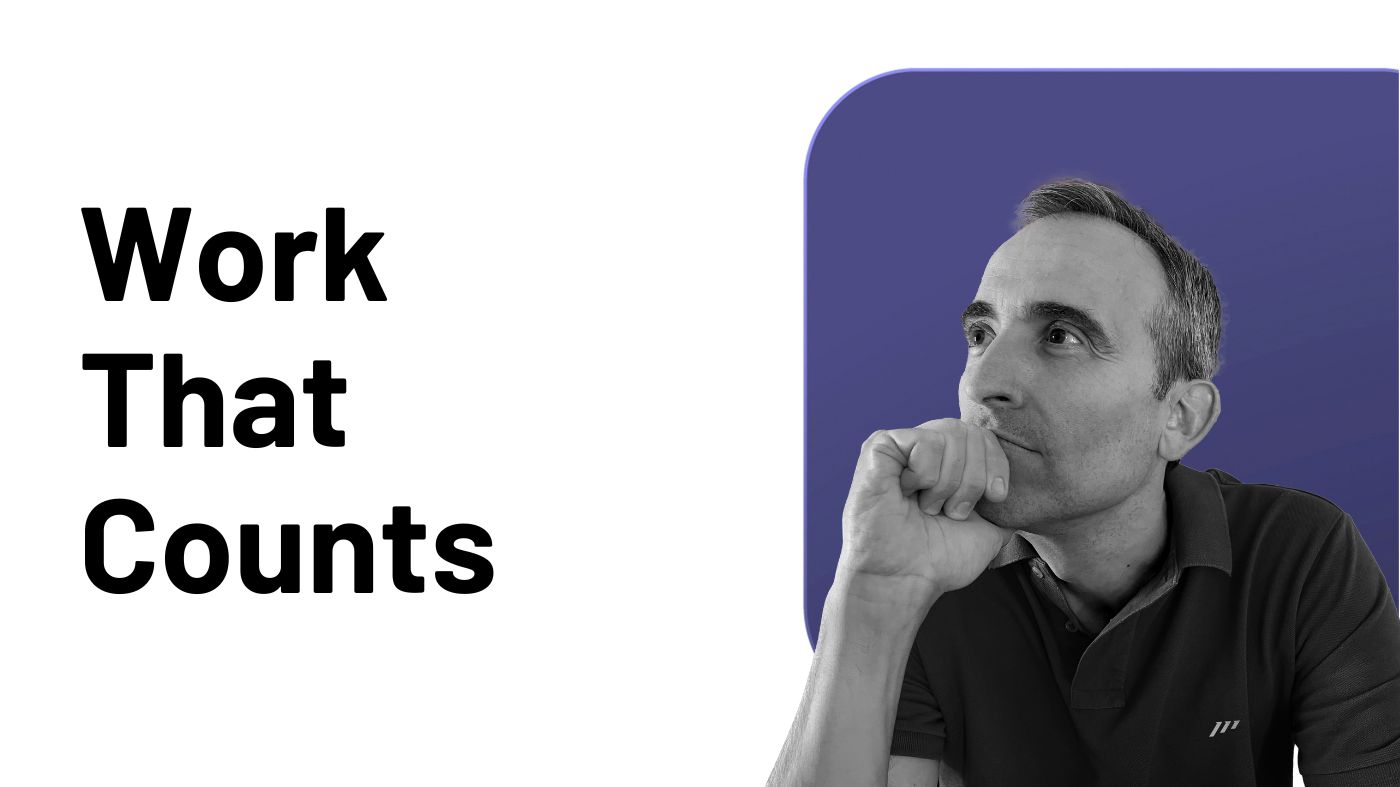Last Monday, April 28th 2025, I experienced one of those historic disruptions that occasionally reshape our understanding of modern life, like COVID-19 or the unprecedented Filomena snowstorm that paralyzed Madrid a few years ago.
This time, it was a massive electricity outage that plunged all of Spain, a country of more than 49 million people spread across more than 500,000 square kilometers, into “darkness.”
The chaos was immediate and total.
Imagine stepping into a world suddenly stripped of its digital skeleton: no traffic lights controlling intersections, no internet connecting you to information, no way to reach your loved ones.
The systems we take for granted every day vanished in an instant, leaving uncertainty in their wake.
“What we call failure is not the falling down but the staying down.” — Mary Pickford
Fortunately, I was able to listen to the radio in my car.
One of the most impressive aspects of this crisis was how Spain’s media infrastructure continued functioning, as all major broadcasters have backup generators specifically designed to keep broadcasting during emergencies. This foresight meant that even as most systems failed, the critical flow of information to the public never stopped.
Yet when the outage first hit, I was oblivious to its scale.
Sitting in a meeting when the lights went out, I casually attributed it to the construction workers I’d noticed outside earlier.
It wasn’t until I arrived home that I grasped the magnitude of what was happening.
By coincidence, I’d been experiencing issues with my phone’s SIM card in the days prior, so when connectivity failed, I initially blamed my service provider, assuming the problem was mine alone.
Once again, I was reminded that ignorance can sometimes be a temporary shelter from anxiety.
What struck me most, as normalcy gradually returned, was how similar this infrastructure collapse was to what happens when a professional’s productivity system breaks down.
The paralysis, the scramble for alternatives, the prioritization decisions, and finally, the recovery process.
This unprecedented blackout offers powerful lessons for busy executives, entrepreneurs, and busy professionals whose personal productivity systems occasionally crash under pressure.
When your productivity infrastructure fails, whether from burnout, crisis, or external shock, how do you diagnose, respond, and ultimately rebuild?
Let me show you how the principles that restored Spain’s power grid can help you reboot your own productivity when systems fail.
Understanding System Collapse: When the Lights Go Out
To understand how to recover from a collapse, we first need to understand what a system actually is and how it fails.
Spain’s electrical grid and your personal productivity system share more similarities than you might think.
A system, at its core, is a network of interdependent components working together toward a common purpose.
Spain’s electrical grid connects power plants, transmission lines, substations, and distribution networks to deliver electricity to homes and businesses.
Similarly, your productivity system connects your energy, tools, routines, habits, and support networks to deliver value through your work.
The power grid that failed across Spain last Monday wasn’t simply a collection of wires and transformers: it was a complex network where each component relied on others functioning correctly.
When I arrived home that afternoon and my wife informed me about what was happening, prompting me to tune into the radio broadcasts about the nationwide blackout, I realized how this interconnectedness mirrors our professional lives.
Your calendar, energy management, digital tools, and team collaborations aren’t separate elements: they’re a unified system that produces your work output.
This interconnectedness creates vulnerability.
In Spain’s case, a failure at a single high-voltage connection between France and Spain triggered cascading failures across the peninsula.
For busy professionals, when one element of your productivity system fails, whether it’s sleep, digital tools, or team support, other elements quickly feel the strain.
These systems also feature dependency chains that aren’t immediately obvious.
Spain’s hospitals had backup generators, allowing critical operations to continue.
But countless other services had no Plan B.
I watched as pharmacies closed, unable to process prescriptions, and restaurants turned away hungry customers because payment systems were down.
Your productivity likely has similar dependencies: certain projects might have built-in flexibility, while others collapse immediately when supporting structures fail.
Perhaps most dangerous is the invisible complexity of these systems.
Most Spaniards, myself included, never think about the intricate network delivering electricity to our sockets, until it stops working.
Similarly, busy professionals rarely examine their productivity infrastructure until it breaks down.
The systems that support our daily work become invisible precisely because they work so well “most of the time.”
Spain’s power grid collapsed due to a technical fault that cascaded through the system. The preliminary investigation revealed that a single point of failure, a high-voltage connection with France, initiated a domino effect that overwhelmed the grid’s protective measures.
Your productivity system can fail in remarkably similar ways.
Overload is perhaps the most common cause.
Just as Spain’s grid couldn’t handle the sudden imbalance between supply and demand, your productivity system can’t sustain prolonged periods of excessive demands.
This happens when you consistently commit to more than your productivity system (and you’re a crucial part of it) can process.
I’ve coached countless executives who maintained impossible schedules for months, only to experience a complete collapse of their ability to function effectively.
Single points of failure represent another vulnerability.
For Spain, it was the cross-border connection. For executives, it might be overreliance on a single productivity method, tool, or team member.
I once worked with a CEO whose entire productivity system depended on her executive assistant. When that assistant took an unexpected medical leave, the CEO’s carefully constructed workflow disintegrated within days.
Neglected maintenance also leads to system failure.
Spain’s grid operators will certainly be examining whether maintenance issues contributed to the failure.
Similarly, busy professionals who neglect the upkeep of their productivity systems, skipping reviews, ignoring stress signals, postponing resets, create conditions for collapse.
The system might function for a while, but small inefficiencies accumulate until they trigger a breakdown.
Sometimes, systems fail due to external shocks.
Just as Spain couldn’t predict the exact technical failure, professionals can’t anticipate every market shift, health crisis, or organizational restructuring that might destabilize their work systems.
The unpredictability of these events makes them particularly dangerous.
Spain’s electrical grid likely displayed warning signs before the total blackout. Grid operators reported frequency fluctuations and unusual load patterns in the minutes before the collapse. Most systems provide warnings before they completely fail, if we know how to recognize them.
For busy professionals, these warning signals often present as cognitive brownouts.
Just as electrical brownouts precede blackouts, mental brownouts (difficulty concentrating, forgetting important details, struggling to make decisions) signal an overtaxed system.
I’ve experienced this myself: when simple decisions become paralyzing and tasks that once took minutes stretch into hours, my system is warning me of impending collapse.
Another signal is decreased recovery capacity.
Spain’s grid couldn’t recover from the initial failure because its protective systems were overwhelmed.
Similarly, when you notice that a good night’s sleep or a weekend off no longer refreshes you, your system’s recovery mechanisms may be failing. This diminishing return on rest is perhaps the most reliable predictor of productivity collapse.
Emotional volatility often accompanies system strain.
Unexpected emotional responses to normal work stressors (frustration, anxiety, or apathy) frequently indicate that your productivity system is approaching its breaking point.
I’ve observed leaders who typically handle pressure with ease suddenly becoming irritable or withdrawn as their systems near collapse.
Finally, compensatory behaviors emerge as systems strain to maintain output.
Just as Spain’s grid tried to compensate for the initial failure by rerouting power (which ultimately made the problem worse), you might notice yourself working longer hours, multitasking excessively, or relying on caffeine to maintain output.
These behaviors might temporarily preserve function, but they accelerate the path to system failure.
Understanding these parallels between Spain’s electrical grid and your productivity system is the first step toward both preventing collapse and knowing how to respond when it occurs.
Just as Spain will learn from this unprecedented outage, you can use moments of productivity breakdown as opportunities to build something more resilient.
As I watched Madrid slowly regain power sector by sector, I couldn’t help but think about how we rebuild our own productivity systems after they fail.
In the next section, I’ll explore how Spain responded in the immediate aftermath of the blackout and what this teaches us about managing the first critical hours of a productivity crisis.
The Immediate Impact: First Hours of Crisis
When Spain’s power grid collapsed at 12:33 that Monday afternoon, the nation experienced what productivity experts call “the moment of impact”; that jarring instant when a system stops functioning:
-
Traffic lights went dark at major intersections, creating immediate chaos as drivers navigated without guidance.
-
Metro trains halted between stations, leaving thousands stranded underground.
-
Hospitals switched to emergency generators while surgeries were in progress.
-
ATMs and payment systems stopped working, leaving people unable to purchase essentials.
-
Mobile networks became overwhelmed within minutes as everyone tried calling loved ones simultaneously.
This cascade of failures wasn’t just inconvenient: it was a systemic shock that required immediate triage.
-
The Spanish authorities responded with remarkable speed, implementing emergency protocols that had been designed for exactly this scenario but never fully tested.
-
Police officers were deployed to major intersections to direct traffic.
-
Emergency services prioritized life-threatening situations.
-
Government officials quickly established communication through the still-functioning TV and radio networks to provide information and prevent panic.
The parallel to productivity collapse for busy professionals is striking.
When your system fails, whether due to burnout, technological failure, or external crisis, the first hours and days are critical.
How you respond in this initial phase often determines how quickly and completely you’ll recover.
I’ve observed that professionals experiencing system collapse typically go through three distinct phases in the immediate aftermath.
First comes the denial phase.
This is where many executives get stuck when their productivity systems fail. They try to continue as if nothing has happened, forcing themselves to work through obvious warning signs.
During the blackout, I watched as some businesses attempted to continue normal operations, only to create more problems when they couldn’t complete transactions or access necessary information.
Similarly, I’ve coached executives who respond to productivity collapse by scheduling even more meetings or taking on additional commitments, a response that only deepens the crisis.
“You never know how strong you are until being strong is your only choice.” — Bob Marley
The second phase is the reality assessment.
In Spain, this happened about an hour into the blackout when people realized this wasn’t a brief interruption but a major event requiring adaptation.
For professionals, this is the moment you acknowledge that your normal ways of working are temporarily unavailable. Your brain isn’t processing information properly, your energy is depleted, or your support systems have disappeared.
This recognition, while sometimes painful, is actually the first step toward recovery.
The third phase is emergency response mode.
During the blackout, Spain activated its emergency coordination center within 45 minutes. Officials identified critical infrastructure needing immediate support and deployed resources accordingly.
For busy professionals, this means implementing your own emergency protocols when productivity fails.
What absolutely must continue functioning, and what can wait?
One CEO I work with has a “system collapse protocol” that specifies exactly what to do when she recognizes her productivity has crashed: reschedule non-essential meetings, activate her support team to handle communications, and focus solely on mission-critical decisions.
What made Spain’s immediate response effective was prioritization based on clear criteria:
-
Emergency services triaged situations based on threat to life, not convenience or economic impact.
-
Hospitals received priority for generator fuel and technical support.
-
Communication networks essential for emergency response were restored before general telecommunications.
When your productivity system collapses, similar triage is essential.
Ask yourself:
-
What tasks involve imminent deadlines that affect others?
-
Which activities are truly time-sensitive versus merely urgent-feeling?
-
What responsibilities can be temporarily delegated?
During Spain’s blackout, another crucial factor emerged: the importance of transparent communication.
Government officials provided hourly updates through TV and radio broadcasts, acknowledging the severity of the situation while outlining specific steps being taken.
This prevented the panic and speculation that often accompany information vacuums.
For busy professionals, this translates to communicating clearly with stakeholders during your own productivity crisis.
Rather than pretending everything is fine while missing deadlines and delivering subpar work, acknowledge the temporary system failure to key stakeholders.
I’ve found that clients, colleagues, and team members respond with surprising support when leaders are transparent about temporary capacity issues.
Perhaps most interesting was watching how different organizations adapted to the sudden loss of their normal operating conditions.
Some businesses simply closed their doors and waited for power to return.
Others quickly improvised manual systems: restaurants creating handwritten receipts, stores accepting cash only, neighbors creating impromptu information-sharing networks.
This adaptability mirrors what resilient professionals do when their productivity systems fail.
Rather than becoming paralyzed by the collapse of your normal routines and tools, you can develop temporary workarounds that maintain essential functions.
One executive I coached experienced a complete technological breakdown while traveling for a crucial client meeting. Instead of canceling, she quickly sketched her presentation on hotel stationery and delivered it with such authenticity that the client was more impressed than they would have been with polished slides.
Improvisation becomes possible when you understand the principles behind your systems, not just their normal mechanics.
As Spain’s emergency response progressed through that first afternoon and evening, it became clear that simply reacting wasn’t enough: a coordinated restoration plan was needed.
Similarly, after addressing the immediate impact of productivity collapse, busy professionals need a structured approach to rebuilding their systems.
In the next section, we’ll examine how Spain methodically restored power to a nation of 49 million people, and how you can apply the same principles to reboot your productivity after system failure.
The Recovery Process: Bringing the Lights Back On
Responding to a crisis is one thing. Rebuilding a collapsed system is another challenge entirely.
As Spain entered the recovery phase of the power outage, citizens watched a master class in methodical system restoration unfold.
The process wasn’t chaotic or random: it followed a carefully orchestrated sequence that prioritized stability over speed.
This methodical approach offers crucial lessons for busy professionals rebuilding their productivity after collapse.
Spain’s grid operators didn’t attempt to restore power to the entire country simultaneously. Instead, they implemented a sector-by-sector approach, beginning with the most critical infrastructure and expanding outward.
-
By 15:00, just two and a half hours after the initial collapse, hospitals and emergency services had stable power.
-
By 17:00, transportation hubs were operational.
-
By 20:00, residential areas began seeing power return.
The full restoration took nearly 10 hours, but this deliberate pacing prevented secondary failures that could have extended the crisis.
This measured approach mirrors what successful professionals do when rebooting their productivity after system failure.
Trying to immediately return to “business as usual” after burnout or system collapse typically leads to secondary failures.
Instead, recovery requires a graduated approach with clearly defined phases.
“Do not judge me by my successes, judge me by how many times I fell down and got back up again.” — Nelson Mandela
The first principle Spain applied was stabilization before expansion.
Grid operators ensured each sector was completely stable before moving to the next. They monitored voltage levels, load balancing, and system responses at each step to prevent cascading failures during the reboot process.
For professionals, this means focusing initially on stabilizing your core functions rather than immediately attempting to reclaim peak productivity.
Begin with foundational elements of your system:
-
Basic physical needs (sleep, nutrition, stress management).
-
Essential professional responsibilities (client-facing commitments, team leadership).
-
Core communication channels (key stakeholder updates, team coordination).
Only when these elements are functioning reliably should you expand to secondary priorities.
One executive I worked with experienced complete burnout after a two-year nonstop sprint through a company merger. His recovery began with a strict focus on physical stabilization (8-hour sleep minimum, regular meals) before gradually reintroducing professional responsibilities.
This stepwise approach, while sometimes frustrating for high-achievers, prevents the premature collapse that often follows incomplete recovery.
The second principle Spain demonstrated was the return to fundamentals.
Spain’s recovery process relied on basic electrical engineering principles rather than complex automated systems. Grid operators manually balanced loads and monitored system responses, temporarily setting aside the sophisticated algorithms that normally manage the grid.
For busy professionals, system recovery similarly requires a return to fundamental productivity principles rather than complex productivity “hacks” or tools.
This might mean:
-
Using even simple paper lists instead of sophisticated digital systems.
-
Focusing on single-tasking rather than multitasking.
-
Implementing basic time-blocking techniques before returning to complex scheduling.
-
Establishing clear boundaries between work and rest.
The sophistication of your productivity system can be gradually reintroduced as recovery progresses.
A third vital principle from Spain’s recovery was constant monitoring and adjustment.
Throughout the restoration process, grid operators continuously monitored system metrics and made real-time adjustments. When they detected potential instability in one sector, they slowed the restoration process until stability returned.
For professionals rebuilding productivity, this translates to implementing regular check-ins with yourself.
The recovery process isn’t linear: it requires constant calibration.
Simple daily assessments help prevent secondary collapse:
-
How is my energy level today?
-
Am I experiencing any early warning signs of system strain?
-
Which commitments might need adjustment based on my current capacity?
-
What small adjustments would help maintain stability?
One CEO I coached developed a simple traffic light system for her recovery period. Green days allowed for expanded commitments, yellow days required caution and selective focus, and red days triggered immediate scaling back to only essential functions.
This monitoring system allowed him to recover without experiencing secondary collapse.
Spain’s recovery process also highlighted the strategic use of redundancy.
During restoration, backup systems were kept in active standby mode, ready to engage if primary systems faltered. This redundancy created a safety net that prevented minor issues from becoming major setbacks.
For busy professionals, building temporary redundancy into your recovery plan provides similar protection.
This might include:
-
Delegation partners who can step in if you detect early signs of system strain.
-
Simplified backup workflows for essential processes.
-
Clear criteria for when to activate contingency plans.
-
Pre-drafted communication templates for adjusting expectations.
These redundancies often feel unnecessary when things are going well but become invaluable when recovery hits unexpected challenges.
Perhaps most importantly, Spain’s recovery demonstrated that patience is a strategic advantage, not a weakness.
Spanish officials resisted public pressure to accelerate the restoration process, knowing that rushed recovery could trigger secondary failures more damaging than the initial outage.
For high-achieving professionals, this patience is often the most difficult aspect of system recovery.
The desire to immediately return to peak performance is powerful but potentially destructive.
Sustainable recovery takes the time it takes.
Research on burnout recovery suggests that the time needed for full system restoration is proportional to the duration and severity of the collapse. A productivity system that took months to break down rarely recovers in days.
One executive I coached required three months of graduated recovery after a two-year period of system abuse. Another needed six weeks to fully restore their productivity after a three-month crisis period.
The timeline varies, but rushing it invariably extends the total recovery period.
As Spain’s power grid gradually returned to full operation that Monday evening, citizens experienced a profound appreciation for systems they had previously taken for granted.
This renewed awareness is perhaps the most valuable outcome of system collapse.
After recovering from productivity breakdown, professionals often develop a heightened sensitivity to early warning signs and a deeper commitment to system maintenance.
The most resilient productivity systems are built by those who have experienced and learned from collapse.
In our next section, we’ll explore how to build this resilience into your productivity system, drawing lessons from how Spain will undoubtedly strengthen its electrical grid in response to this unprecedented failure.
Building a More Resilient System: Beyond Recovery to Reinvention
As Spain’s power grid returned to normal operation, the conversation immediately shifted from recovery to resilience:
-
How could the nation prevent such a widespread failure from happening again?
-
What structural improvements would make the system more robust against future threats?
This forward-looking perspective is precisely what busy professionals need after recovering from productivity collapse.
System failure isn’t just a crisis to overcome; it’s an opportunity to rebuild something stronger.
Spain’s energy officials have already announced a comprehensive grid resilience initiative that will unfold over the next three years. Their approach offers a blueprint for professionals seeking to strengthen their own productivity systems.
The first principle Spain is implementing is strategic redundancy.
The investigation revealed that the outage cascaded through the system because certain critical junctions lacked adequate backup pathways. Spain is now investing in redundant transmission routes between sectors so that future failures remain localized rather than system-wide.
For busy professionals, strategic redundancy doesn’t mean duplicating everything. It means identifying your productivity system’s potential single points of failure and creating targeted backups.
Consider:
-
Which components of your productivity system have no alternatives if they fail?
-
Where are you overly dependent on a single tool, process, or person?
-
Which critical workflows lack documented alternatives?
One executive I coached identified that her entire communication system depended on email access. After a server crash cost her three crucial days, she established redundant communication protocols using multiple channels, each with different technical dependencies.
Another realized his team productivity hinged entirely on his daily direction. After a health scare took him offline for a week, he developed decision-making frameworks that empowered his team to function effectively during his absence.
True resilience isn’t about having a Plan B; it’s about designing systems where Plan A can’t completely fail.
“Resilience is accepting your new reality, even if it’s less good than the one you had before.” — Elizabeth Edwards
The second principle in Spain’s resilience strategy is isolated functionality.
Engineers are redesigning the grid with improved circuit breaks and isolation mechanisms, allowing problems in one area to be contained without affecting the entire system.
For busy professionals, this means designing productivity systems with intentional firewalls between different areas of responsibility.
This might involve:
-
Creating separate communication channels for different projects or roles.
-
Establishing clear boundaries, if necessary, between work and personal domains.
-
Developing modular workflows that can function independently.
-
Implementing time buffers between intensive work periods.
One CEO I worked with redesigned his weekly schedule with deliberate isolation between strategic activities (mornings), operational responsibilities (afternoons), and people leadership (specific days). When one domain experienced disruption, the others remained stable.
Isolation doesn’t mean fragmentation; it means thoughtful compartmentalization that prevents total system failure.
Spain’s third resilience principle focuses on enhanced monitoring systems.
The country is investing in a next-generation grid monitoring network that will detect subtle warning signs long before they threaten system stability.
Similarly, professionals need robust early-warning systems for their productivity.
These monitoring mechanisms might include:
-
Weekly personal reviews to assess energy levels and system performance.
-
Tracking tools that measure output trends over time.
-
Trusted colleagues authorized to flag concerning behaviors or patterns.
-
Regular assessment of key metrics like sleep quality, decision satisfaction, and work-life boundaries.
One executive established a simple but effective monitoring system: a weekly 15-minute meeting with her assistant specifically focused on spotting warning signs of system strain.
Another implemented a daily journaling practice designed to track subtle shifts in energy, focus, and satisfaction, creating a personal early warning system for productivity collapse.
What gets measured gets managed, especially the warning signs that precede system failure.
Spain is also embracing adaptive capacity as a core resilience principle.
Rather than optimizing the grid solely for efficiency during normal operations, engineers are redesigning it to rapidly adapt to changing conditions and unexpected stresses.
This principle is equally valuable for professional productivity systems.
Resilient productivity isn’t about creating the perfect productivity system that never experiences strain. It’s about designing a productivity system that can flex, adapt, and reconfigure under pressure.
This might mean:
-
Building margin into schedules rather than optimizing for maximum output.
-
Creating decision-making frameworks that function under various conditions.
-
Developing modular commitments that can be reconfigured as circumstances change.
-
Practicing rapid priority reassessment during small disruptions.
The most resilient professionals I’ve worked with don’t have static productivity systems; they have adaptive frameworks that evolve with changing conditions.
One executive I coached developed a “pressure protocol” with three distinct operating modes: normal, enhanced, and emergency. Each mode had clear triggers, modified workflows, and appropriate resource allocations.
When market conditions suddenly changed, he could swiftly transition between modes without experiencing system collapse.
Resilience isn’t the absence of pressure; it’s having systems that respond appropriately to changing conditions.
Perhaps most importantly, Spain is investing in human capacity development.
Beyond technical improvements, the country is enhancing training for grid operators, teaching them to recognize patterns, make decisions under pressure, and collaborate effectively during crises.
For busy professionals, this human element is equally crucial.
Technical systems and tools matter, but your personal capacity to recognize threats, make decisions, and adapt is the foundation of true resilience.
This development might include:
-
Learning stress management techniques that function during crisis.
-
Practicing decision-making under various constraints.
-
Building a support network trained to provide specific assistance during system strain.
-
Regularly reviewing and learning from minor disruptions.
One leadership team I work with conducts quarterly “resilience simulations” where they practice responding to unexpected disruptions. These exercises build the mental muscles needed during actual system challenges.
Tools and systems matter, but ultimately, resilience lives in human judgment and adaptability.
As Spain implements these resilience principles, officials acknowledge an important truth: they aren’t trying to create a system that never fails. That’s impossible. Instead, they’re building a system where:
-
Failure is less likely.
-
More contained when it happens.
-
Less catastrophic in its impact.
This realistic approach to resilience is precisely what busy professionals need.
Perfect productivity doesn’t exist. Productivity systems will experience pressure, components will occasionally fail, and unexpected challenges will emerge.
True resilience isn’t about eliminating failure; it’s about designing systems that fail gracefully and recover stronger.
When I think about the darkened streets of Madrid slowly illuminating sector by sector that Monday evening, I’m reminded that resilience isn’t just about preventing breakdown; it’s about ensuring that when systems do fail, we have the capacity to rebuild them better than before.





